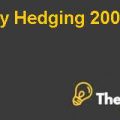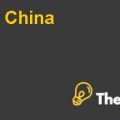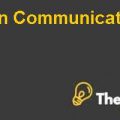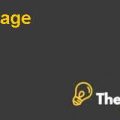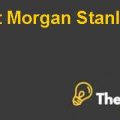Question number 1:
It is a general phenomenon that the tax benefit flows to the entity over the interest rate payments over the interest bearing debts. Swedish is under consideration to take a benefit of tax savings and high gearing benefit of lower weighted average cost of capital. The tax benefit can flow to the entity for the period it is willing to hold the debt. The benefit is only for the amount that is being held by the as a debt, the tax benefit can flow to the entity by any mean of the debt raising structure either it is Euro bond or any other mean, the interest expense paid is deductible from operating profits.
In the case of Swedish, the debt is amounting to SEK 4 billion, the interest rate yield over the debt amount is 4.5% and the tax rate that SEK pays is 28%. The annual interest expense for the debt is SEK 180 million that gives it a tax benefit or the tax shield of SEK 50.4 million per annum. The tax shield benefit can flow to the company by raising more debts as in the last part, the option of SEK 8 billion is also available that can increase or double the annual tax shield. Currently, the interest cover ratio and EBITDA is enough to bear the interest liability of SEK 180 million and it does not affects the interest coverage ratio as it is currently earning profit above SEK 2 billion.
Question number 2:
If Swedish Match is going to raise a debt of SEK 4 billion, then the books of accounts and balance sheet is to be affected due to the change in the structure of debt and liabilities. In this case, if it was considered that the company had raised the debt of SEK 4 billion and it had successfully repurchased the stocks from the stock market, then the change could come from both the sides; equity and liability.
In this case, the liability increases with an amount of SEK 4 billion and the equity has to decrease with the same amount in the contra effect. The effect on the liability is understood because the market value and the value of the books do not change, but the main issue here is the equity value. The value of shares in the books is different from the value under stock market therefore its treatment is necessary.
The value of shares in the book of accounts is less than the share value in the stocks. As a result, the equity should be deducted by the actual amount of per share is the books of account, but any extra amount paid over the book value is going to hit the retained earnings that is also a part of equity. Therefore, the effect on liabilities and the equity is same. The values can be examined in appendix 2.
Question number 3:
In this case, the market values of equity and debt are under consideration. The step to repurchase the shares and raise debt may not take place at the same time therefore the different timing effects are required to consider. There are three possibilities, in first, the current values and then the value or ration after raising the debt and at the end, the ratio after the repurchase of stocks.
Leverage recap:
Current leverage recap can be achieved from exhibit 7 that indicates all the figures and ratios related to the current situation of the company. Under the base case scenario, the company currently has debts of SEK 3,529 million and equity value of SEK 28,454 million, d3riving the debt over value ratio of 11% and equity over value ratio of 89% (Appendix 3). Currently, its debt over value ratio is lower than its international peer in which debt ratio ranges from 13% to 36% (Exhibit 7).
Issuance of debt:
If it successfully raises a debt of SEK 4,000 million, then in the base case only the amount of debt has to change as it does not affect the equity value. The revised debt over value amounting to SEK 7,529 and the equity remains same with SEK 28,454. In this case, the ratio does change due to increase in the leverage of the company. The new debt to value ratio is 21% and equity over value ratio at 79% (Appendix 3). The ratio falls under the range of its competitors, i.e. 13% to 36%...............................
This is just a sample partial case solution. Please place the order on the website to order your own originally done case solution.

